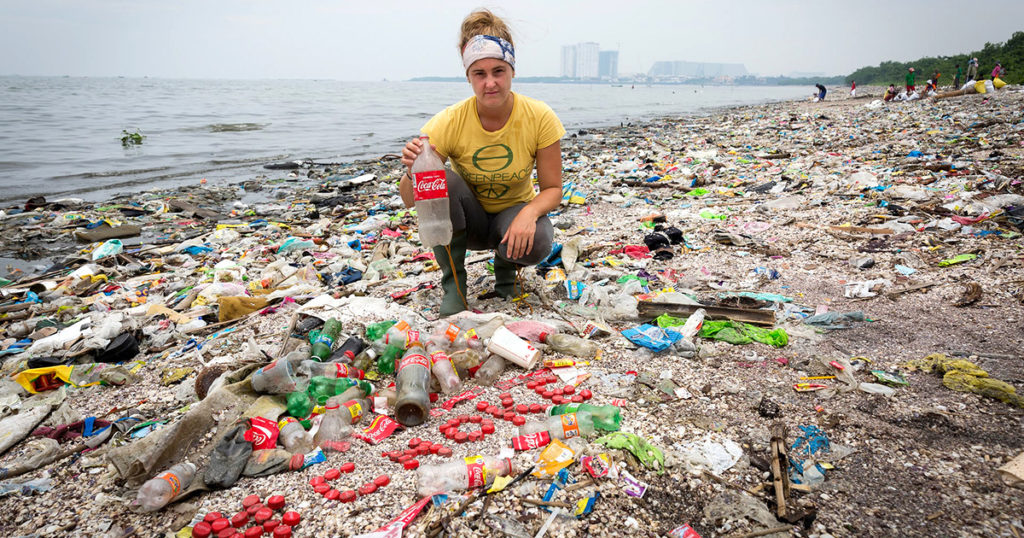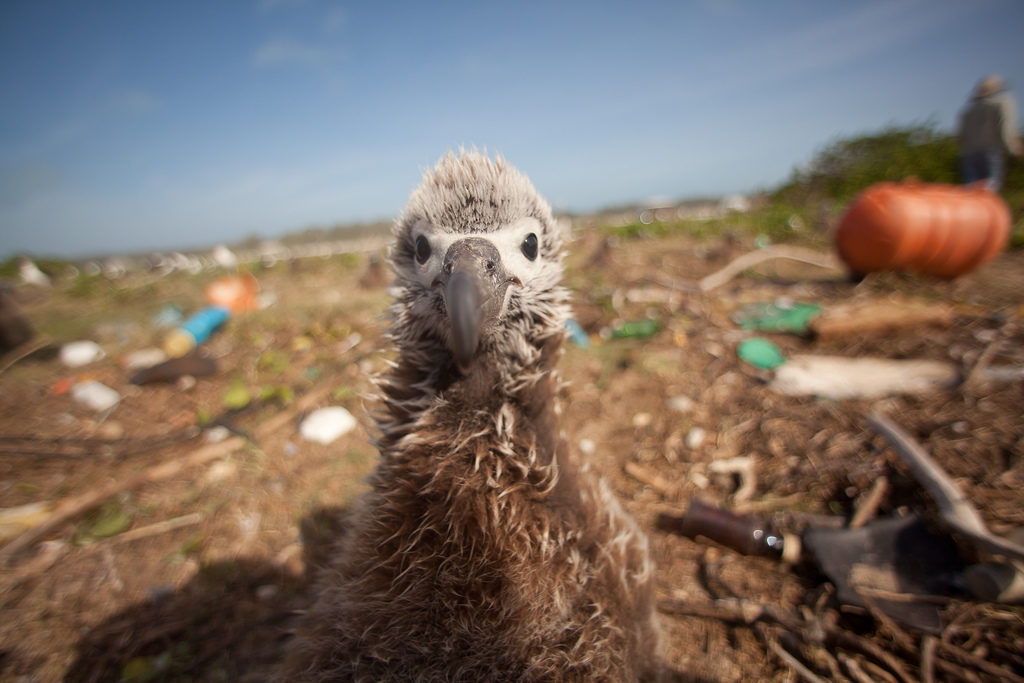Coca-Cola Produced More Than 110 Billion Plastic Bottles Last Year
ENVIRONMENT, 9 Oct 2017
Andrew McMaster | Global Citizen – TRANSCEND Media Service
Amidst growing marine pollution, Greenpeace is applying pressure on the soft drink multinational.
2 Oct 2017 – Every second, more than 20,000 drinks in plastic bottles are purchased around the globe.
That adds up to more than 1 million bottles a minute and nearly 500 billion bottles per year.
It may come as no surprise then that the largest beverage manufacturer, Coca-Cola, reportedly manufactured more than 110 billion plastic bottles in 2016.
Read More: Arctic Waters Could Soon Be Choked by Plastic, Expert Warns
The environmental activist group Greenpeace claims that this number has risen by about 1 billion bottles since last year, despite Coca-Cola’s public campaign to reduce the amount of plastic it uses.
“We have calculated [Coca-Cola] produced over 110 billion throwaway plastic bottles every year — an astounding 3,400 a second,” Louise Edge, oceans campaigner for Greenpeace, told the Guardian.

Greenpeace Canada Oceans campaigner Sarah King with a collection of Coca-Cola bottles and caps found on Freedom Island, Philippines. Daniel Müller / Greenpeace
Greenpeace has been campaigning for Coke to stop polluting oceans with plastic bottles over the last few months. The organization reports that plastic bottles are one of the most commonly found items on beaches across the world, bringing a litany of environmental hazards with them wherever they pop up.
Read More: Tiny Pellets, Big Problem: Plastic Pollutes 73% of British Beaches
“Once [plastic bottles] are in the environment, they become a hazard for wildlife,” wrote Tisha Brown, a campaigner for Greenpeace’s ocean team. “Larger pieces of plastic can become an entanglement or choking hazard for animals. These larger plastics break down over time into microplastics which have been found in everything from seafood, sea salt and even our drinking water.”
. @CocaCola – Nothing used for 5 minutes should pollute our oceans for centuries. https://t.co/fxKNtIZHAc #EndOceanPlastics pic.twitter.com/cYWRX4OpGZ
— Greenpeace International (@Greenpeace) October 2, 2017
Greenpeace, for its part, has used a variety of tactics to raise awareness of the soda company’s pollutive ways, such as posting fake Coke advertisements labeled “Choke” and erecting a sculpture of a seagull vomiting garbage outside of Coke’s UK headquarters using plastic bottles.
.@Greenpeace tableau on @CocaColaCo doorstep – family on beach, seagulls throwing up half-ingested bottles. #Choke. pic.twitter.com/DokhpReSFQ
— Lindsay Northover (@LPNorthover) April 10, 2017
All of these measures were intended to raise awareness about the growing need to address plastic levels in our oceans. It has been estimated that there could be more plastic than fish in the world’s oceans by 2050.
In response to these concerns, Coca-Cola UK announced several measures aimed at reducing plastic use, including a pledge to increase recycled plastic in its bottles to 50% by 2020.
Read More: Coca Cola Will Use More Recycled Plastic — But Only in the UK
Many feel this target does not represent a true commitment to fighting pollution by the company. Amid investigations of the size and scope of Coke’s manufacturing process, Greenpeace activists see many of the beverage giant’s actions as PR moves.
“We were trying to uncover for the first time the true size of Coca-Cola’s plastic footprint,” Louisa Casson, oceans campaigner for Greenpeace, told CNN. “And we are actually seeing them going backwards. Rather than investing more in refillables and reusables, they’ve increased their use of single-use plastic bottles over the last decade.”
_______________________________________
 Andrew McMaster is an editorial intern at Global Citizen. He believes that every voice is significant, and through thoughtful listening we can hear how every person is interrelated. Outside of the office he enjoys cooking, writing, and backpacking.
Andrew McMaster is an editorial intern at Global Citizen. He believes that every voice is significant, and through thoughtful listening we can hear how every person is interrelated. Outside of the office he enjoys cooking, writing, and backpacking.
Go to Original – globalcitizen.org
DISCLAIMER: The statements, views and opinions expressed in pieces republished here are solely those of the authors and do not necessarily represent those of TMS. In accordance with title 17 U.S.C. section 107, this material is distributed without profit to those who have expressed a prior interest in receiving the included information for research and educational purposes. TMS has no affiliation whatsoever with the originator of this article nor is TMS endorsed or sponsored by the originator. “GO TO ORIGINAL” links are provided as a convenience to our readers and allow for verification of authenticity. However, as originating pages are often updated by their originating host sites, the versions posted may not match the versions our readers view when clicking the “GO TO ORIGINAL” links. This site contains copyrighted material the use of which has not always been specifically authorized by the copyright owner. We are making such material available in our efforts to advance understanding of environmental, political, human rights, economic, democracy, scientific, and social justice issues, etc. We believe this constitutes a ‘fair use’ of any such copyrighted material as provided for in section 107 of the US Copyright Law. In accordance with Title 17 U.S.C. Section 107, the material on this site is distributed without profit to those who have expressed a prior interest in receiving the included information for research and educational purposes. For more information go to: http://www.law.cornell.edu/uscode/17/107.shtml. If you wish to use copyrighted material from this site for purposes of your own that go beyond ‘fair use’, you must obtain permission from the copyright owner.
